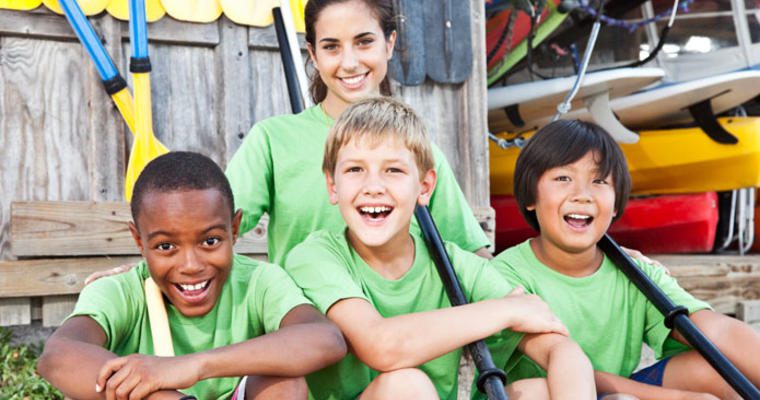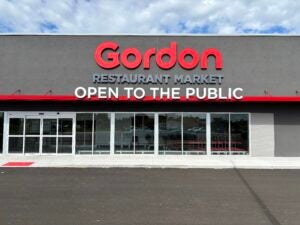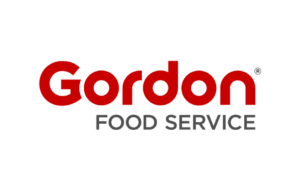It’s easy to understand why so many people enjoy camping. There’s the relaxation of chatting around the campfire, the challenge of hiking and the simple joy of admiring nature’s beauty. But not everyone camps in the wilderness and cooks over an open fire. For many people, camping takes place at summer youth camps or get-aways at public campgrounds, where there are large dining halls or concession-style service. In any of these situations, camp food safety is of the utmost importance for those who feed campers. The last thing you want to do is cause a foodborne illness that spoils the pleasure of camping.
Many camp operations are staffed by seasonal workers. This makes it vital to train them in proper safety procedures—everything from the basics of proper handwashing to food temperatures and sanitary preparation techniques. Here are a few areas to keep in mind:
Wash hands
Keeping hands clean can be a challenge in a camp setting, especially when you’re out in the wilderness. But it’s still just as important to have clean hands when preparing food at camp as it is anywhere else. Make sure campers—and anyone preparing or handling food—are washing their hands:
- Before preparing food.
- Before eating.
- Before putting on gloves.
- After using the restroom.
- After handling raw meat, poultry, fish or eggs.
- After handling dirty dishes.
- After smoking.
- If no clean water or soap is available, the next best option is to use hand sanitizer or hand-sanitizing wipes.
Keep cold foods cold
If you’re not camping with an electricity source, keeping cold foods cold can be difficult. It’s important to remember that cold foods must be kept at 41°F, or below, until the food is ready to be cooked or eaten.
- Use an insulated cooler.
- Include a cold source—a block of ice stays cold longer than ice cubes.
- Pack foods in the smallest quantity size needed so the cooler stays cold.
- Keep the cooler out of direct sunlight to retain cold as long as possible.
Safe food prep
The surfaces used to prepare food should be thoroughly cleaned before food is prepared for cooking or serving.
- Use clean cutting boards for preparing raw meat, poultry or fish.
- Clean knives and cutting boards after use with raw meat, poultry or fish.
- Serving utensils, such as tongs and spoons, should be cleaned before serving food.
Use a thermometer
When cooking food, remember to use a thermometer to determine if the food has been fully cooked and is safe for eating. Never use the color of the cooked meat, poultry or fish to determine doneness—always use a food thermometer instead, especially if you are cooking over a fire, where it can be difficult to understand how long to cook the food.
- Cook all poultry to 165°F.
- Heat any leftover food to 165°F.
- Cook all ground meat and ground pork to 155°F.
- Cook whole cuts of meat, pork and fish to 145°F.
- Clean the thermometer between uses.
Meal service
There are many different types of meal service at camps with full kitchens. Two of the most common are buffet-style and family-style meal service. Both have advantages and disadvantages, depending on the camp’s dining room and the number of campers being served each day.
Buffet-style
- Keep cold foods over ice and monitor the temperature.
- Keep hot foods hot with heated steam tables.
- Provide tongs, ladles and other serving utensils to keep hands out of the food.
- Include a sneeze guard to keep germs from campers out out of the food.
Family-style
- Establish a time parameter for keeping food on the tables so food stays out of the danger zone (41ºF to 135ºF) as long as possible.
- Provide tongs, ladles or other serving utensils to keep hands out of the food.
- Ask staff to walk around the dining area to assist campers and encourage use of serving utensils.
Safe water
If you are camping somewhere without access to clean water, make sure to pack plenty of clean water for drinking and also for cleaning and cooking purposes. Never use water from rivers, lakes, creeks or streams for drinking, cooking or cleaning since it can contain bacteria and parasites invisible to the naked eye.
- Fill a large jug (with a spout) with clean water for easy drinking water access.
- If no fresh water is available, you can boil fresh water for safe drinking by:
- Bringing water to a rolling boil then continuing to boil for a minimum of 1 minute.
- Use water purification tablets to kill most bacteria, viruses and some (not all) parasites.
- Use water filters after using water purification tablets to eliminate parasites as well.
When feeding campers, there are many food-safety considerations to keep in mind that reduce the risk of foodborne illness. By following these recommendations, you will be sure campers have the best experience possible. For more information, including food safety logs/charts, posters and training, please visit the Food Safety Awareness page on Gordon Experience, under Resources.




























